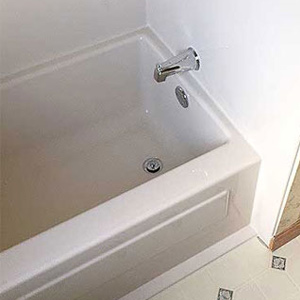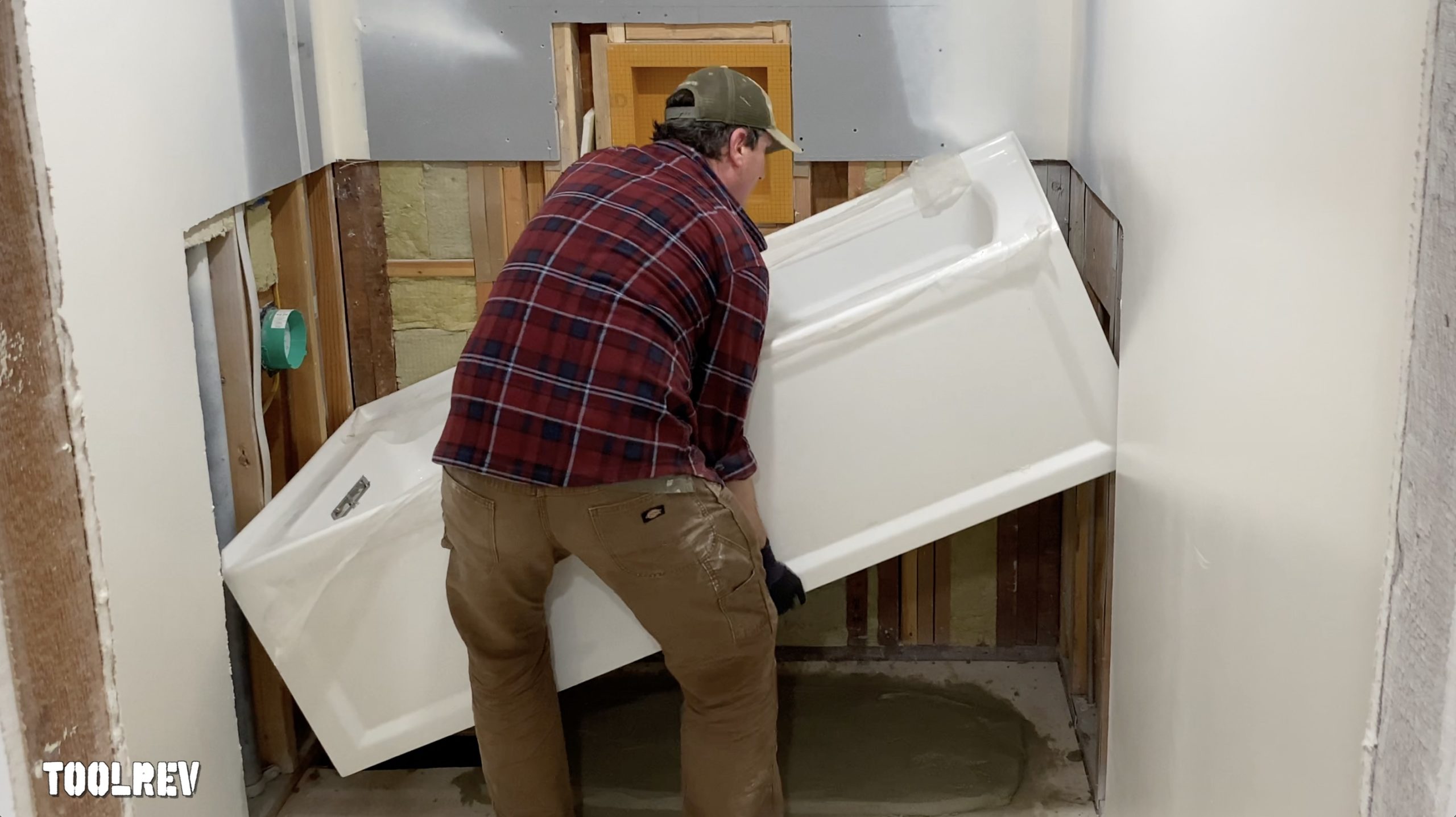The Basics of Plumbing Skills for Bathtub Installation
The Basics of Plumbing Skills for Bathtub Installation
Blog Article
How do you actually feel when it comes to Tools You Need to Install a New Bathtub ?

Installing a bath tub isn't precisely rocket science, yet it does require solid plumbing, woodworking, and also in some cases, tiling abilities. Changing an old tub with a new one is additionally a reasonably tough project. If the old tub is readily available, the project can move speedily; if you need to open up a wall to eliminate the old tub and also place the brand-new bathtub, the task is much harder. In either instance, the job is within a residence handyman's abilities, although you will certainly need an assistant to vacate the old bathtub as well as set in the new one. Make certain you have qualified yourself for the work and fit attempting it. Instead of hiring a service provider to take control of a halfway-completed task, it is better to think about using one before you start. Possibilities are you might need a specialist plumber to make tube links.
This article will aid you set up a brand-new tub in your restroom if you have currently bought a brand-new bathtub as well as don't require to alter the plan of your previous water system pipelines.
Your tools and product list need to make up the following:
Removing Old Touches
If you need to replace old taps with brand-new ones as a part of your setup, after that the first thing you ought to do is detach the supply of water. After doing so, switch on the taps to drain any type of water staying in the system. The procedure of getting rid of the existing faucets can be fairly bothersome due to the limited gain access to that is usually the case.
Utilize a container wrench (crowsfoot spanner) or a faucet tool to undo the nut that links the supply pipelines to the faucets. Have a towel ready for the continuing to be water that will certainly come from the pipes. When the supply pipes have actually been removed, use the exact same device to loosen the nut that holds the faucets onto the bath/basin. You will certainly require to stop the solitary faucets from turning during this procedure. As soon as the faucets have been gotten rid of, the holes in the bath/basin will certainly have to be cleaned of any type of old sealing substance.
Before moving on to fit the brand-new faucets, contrast the pipeline links on the old faucets to the brand-new taps. If the old faucets are longer than the new taps, then a shank adapter is required for the new taps to fit.
Fitting New Touches
If the tails of the new taps are plastic, after that you will need a plastic port to avoid damages to the string. One end of the adapter fits on the plastic tail of the tap as well as the other end offers a link to the existing supply pipes.
If you need to fit a monobloc, then you will certainly need lowering couplers, which attaches the 10mm pipeline of the monobloc to the standard 15mm supply pipe.
Next off, place the tap in the installing hole in the bath/basin guaranteeing that the washers are in location between the faucet as well as the sink. Protect the faucet in place with the manufacturer provided backnut. When the tap is securely in place, the supply pipes can be connected to the tails of the taps. The faucets can either be connected by utilizing corrugated copper piping or with regular faucet connectors. The previous type needs to be linked to the tap ends first, tightening up just by hand. The supply pipelines can later on be attached to the other end. Tighten up both ends with a spanner after both ends have actually been linked.
Installing the Tub
Making use of the two wooden boards under its feet, put the tub in the required position. The wood boards are useful in equally spreading the weight of the bath tub over the area of the boards as opposed to focusing all the weight onto 4 small points.
The next goal is to make certain that the bathtub is leveled all round. This can be achieved by checking the spirit level and changing the feet on the tub up until the spirit level reads degree.
To install taps, fit all-time low of the outermost flexible tap adapter to the proper supply pipe by making a compression join; after that do the exact same for the other faucet.
Turn on the water supply as well as check all joints as well as brand-new pipework for leaks and tighten them if necessary. Fill up the tub and additionally check the overflow electrical outlet as well as the typical outlet for leaks.
Ultimately, deal with the bath paneling as explained in the producer's instruction manual. Tiling and sealing around the tub ought to wait up until the tub has been utilized at least when as this will certainly settle it into its final placement.
Getting ready for the Setup
Firstly, the sustaining frame provided with the bath must be fitted (if needed) according to the producer's guidelines. Next off, fit the faucets or mixer to the bath tub. When fitting the tap block, it is very important to make certain that if the faucet features a plastic washing machine, it is fitted between the bath and also the taps. On a plastic bath, it is also sensible to fit a sustaining plate under the taps system to stop pressure on the bathtub.
Fit the adaptable faucet adapters to the bottom of both faucets utilizing 2 nuts and also olives (occasionally provided with the bathtub). Fit the plug-hole outlet by smearing mastic filler round the sink electrical outlet opening, and then pass the electrical outlet via the hole in the bath. Use the nut provided by the maker to fit the plug-hole. Take a look at the plug-hole electrical outlet for an inlet on the side for the overflow pipe.
Next off, fit the end of the flexible overflow pipe to the overflow outlet. After that, screw the pipeline to the overflow face which need to be fitted inside the bath. Make sure you utilize all of the provided washers.
Link the catch to the bottom of the waste outlet on the bath tub by winding the string of the waste outlet with silicone mastic or PTFE tape, and also screw on the catch to the electrical outlet. Link all-time low of the overflow tube in a comparable manner.The bath should now be ready to be fitted in its final position.
Tiling Around the Bathtub
In the area where the bathroom fulfills the tile, it is needed to seal the accompanies a silicone rubber caulking. This is very important as the fitting can move enough to break a rigid seal, causing the water to penetrate the wall in between the bathroom and the tiling, causing complications with dampness as well as possible leaks to the ceiling listed below.
You can choose from a selection of coloured sealants to assimilate your fixtures and installations. They are marketed in tubes and cartridges, and also can sealing gaps up to a width of 3mm (1/8 inch). If you have a bigger gap to load, you can load it with spins of soaked newspaper or soft rope. Bear in mind to constantly load the bath tub with water prior to securing, to enable the motion experienced when the tub is in use. The sealer can crack fairly early if you do not take into consideration this motion before securing.
Conversely, ceramic coving or quadrant floor tiles can be used to edge the bathroom or shower tray. Plastic strips of coving, which are easy to use and also cut to dimension, are also easily offered on the market. It is suggested to fit the floor tiles making use of waterproof or waterproof glue and also grout.
Bathtub Installation
How Important Is A Bathtub To Your Home?
High-quality baths, showers, and other bathroom updates are necessary when considering a smart investment in your home. It’s a room that you go to every day and one that is constantly being used by guests.The bathroom is one of the top trafficked rooms in a home and also one of the most valuable in terms of home resale.
Install Piping Before Tub
You will be using your existing drain and waste vent system, but pipes required include the hot and cold water supply lines and a pipe leading to a shower head. A mixing valve and shower head are also needed. Air chambers may be required.
Position the Tub
Lower the tub into place so that the continuous flange fits against the wall studs and rests on 1’x4' or 2’x4' supports. Anchor the tub to the enclosure with nails or screws inserted through the flanges into the studs.
NOTE: Remember, bathtubs and shower stalls may require support framing. A bathtub filled with water is extremely heavy, so check building codes and framing support before installing the tub.
Assemble Drain Connections
Assemble the bathtub drain connections by connecting the tub overflow with the tub drain above the trap, not beyond it. The trap will have a compression fitting that screws over the arm of the overflow assembly.
Place a Pipe For the Shower Head
First, locate a brass female threaded winged fitting and attach it to a framing support via a screw or a nail. Then run a pipe up the wall for the shower head. Sweat or solder the other side of the brass fitting to the top of the pipe.
Attaching Hot and Cold Water Lines
Attach your water lines for both hot and cold by sweating these directly into the hot and cold ports of the mixing valve. The mixing valve will be how water enters the tub’s system, not by the pipes themselves.
Install the Spout
Extend a piece of 1/2 inch pipe, or whichever length is specified in the manufacturer’s instructions, for the tub spout. Sweat on a male threaded fitting at the end of the pipe or use a brass nipple of the proper length and a 1/2 inch cap.
NOTE: At this point you should have your rough-in plumbing work inspected before proceeding further.
Check For Leaks
Restore the water pressure and check the drain connection and the supply pipes for any sign of leaking.
estore the Bathroom Wall
Replace the wall with moisture-resistant drywall as a base for your wall covering. Seal the joints between the wall and your new tub with silicone caulk as protection against water seepage.
https://www.berkeys.com/2016/12/02/bathtub-installation-dallas/

Do you like reading up on A Step-by-Step Guide to Installing a Bathtub? Leave feedback below. We will be delighted to listen to your feelings about this blog post. Hoping that you visit us again before long. Liked our piece? Please share it. Help another person locate it. We value reading our article about How to Install a Bathtub.
We're ready, dial now! Report this page